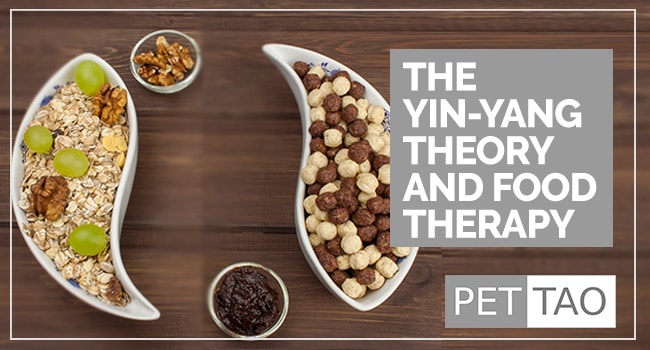Smack dab in the middle of the billboard sat a perfectly designed representation of the yin-yang symbol, more appropriately termed the Taijitu.
I asked myself: “How many people driving up and down this road really know the true meaning of that symbol?”
We see it all the time. But, what does the symbol signify? What is its true meaning?
The True Meaning of the Yin-Yang Symbol
So, what does the yin yang symbol really mean?
The symbol itself is a graphical representation of the yin-yang theory, one of the two guiding theories of TCVM.
The Yin-Yang Theory describes how every naturally occurring event has equal and opposite forces.
Think about it!
Night turns to day, right is relative to left, up is the opposite of down, and so on.
Other phenomena/forces include:
- Hot/cold
- Light/dark
- Day/night
- Weak/strong
- Soft/hard
- Dry/moist
- Man/woman.
These forces are naturally occurring and behave in ways that are, in fact, frequently relative to one another. For instance, without hot would we ever learn to appreciate cold?
Many times, these forces stand alone, yet they are totally interdependent on each other. Without one, you would not have the other. But together, these forces represent the whole, the totality.
One force cannot exist without the other, and one force is the origin of the other. These forces are in constant motion, change, conflict and struggle.
Put it in Simple Terms
Imagine two children playing on a see-saw. One child is Yin, the other Yang. Each child struggles to maintain his balance. They go up and down, up and down, but sometimes they hit that sweet spot where up in the air, they are balanced.
The children’s struggle and subsequent balance precisely depict the ongoing struggle between natural forces portrayed in the Yin-Yang Theory.
Considering food, all-natural foods have this yin-yang principle in the form of a cooling, warming, or neutral energetic effect on the body.
Warming, cooling, or neutral effects are termed “food energetics.”
Again, when the yin force and the yang force are in balance, health is the result. When these forces are out of balance, disease results.
How Does the Yin-Yang Theory Apply to Food?
As mentioned previously, every naturally occurring food is either warming, cooling, or neutral.
But first, the simplest approach to understanding the Yin-Yang Theory and its relation to food is to understand disease pathology in TCVM.
Disease or imbalances in TCVM are broadly classified as either “hot” or “cold.”
Hot diseases include allergies, hot spots, and renal failure. Redness, irritation, swelling, and pain indicate heat.
In contrast, cold diseases include geriatric arthritis, hind end weakness, and chronic diarrhea.
Cold diseases improve with movement or the generation of internal heat and are common in older animals.
Have you ever used ice on a sprained ankle?
Diseases that are “hot” are treated with foods, acupuncture points, and herbals that are “cold.”
Diseases that are “cold” are treated with foods, acupuncture points, and herbals that are “warming.”
When the balance between hot and cold is achieved, health is achieved.
Show Me an Example (Veterinary Food Therapy)
As an example, imagine you have a young dog named Buck that is plagued by recurring hot spots.
According to TCVM pathology, hot spots are a “hot” disease. Let’s also pretend Buck resides in the South where the heat and humidity are relentless.
So what do you do?
Well, you feed Buck cooling foods. Cooling foods balance the heat of the hot spot and counteract the environmental heat of Buck’s climate.
Buck has a “hot” disease and to bring him back into balance and health, feed him “cooling” foods.
Sounds Complicated But,
It’s really pretty simple and straightforward.
You feed foods according to their inherent energetics-food energetics.
So the next time you see the yin-yang symbol, you too can recognize and understand the true significance of the symbol – that it’s much more than just a cool graphic.
As a matter of fact, it’s a powerful philosophy in maintaining health, happiness, and harmony in your pet.








